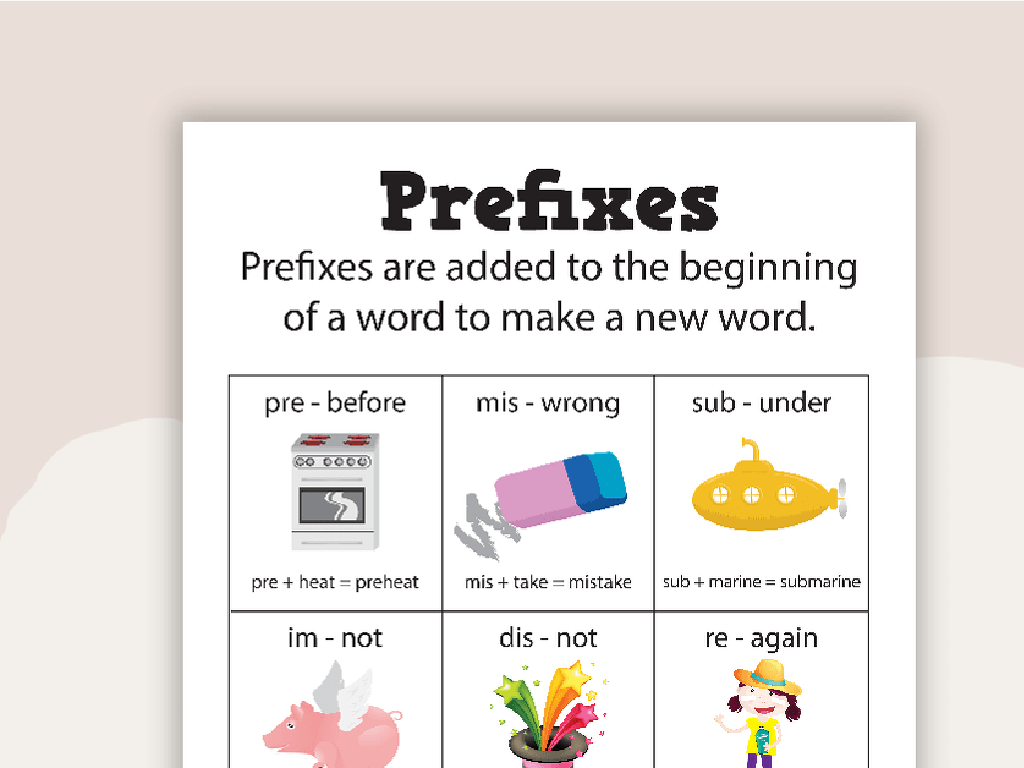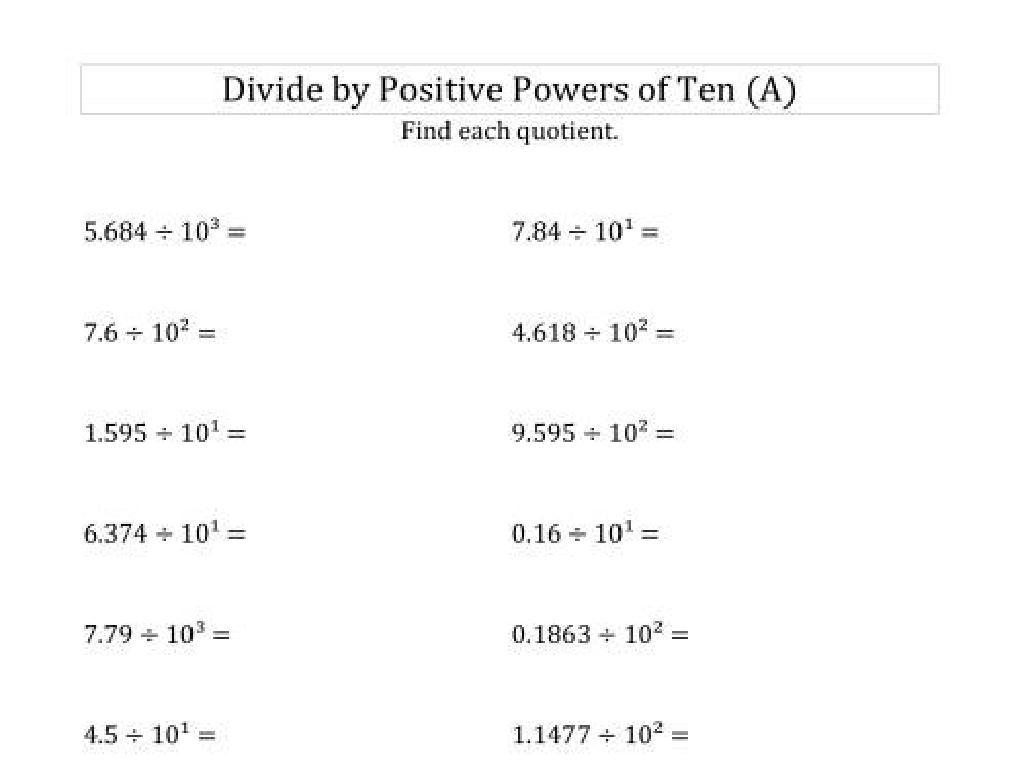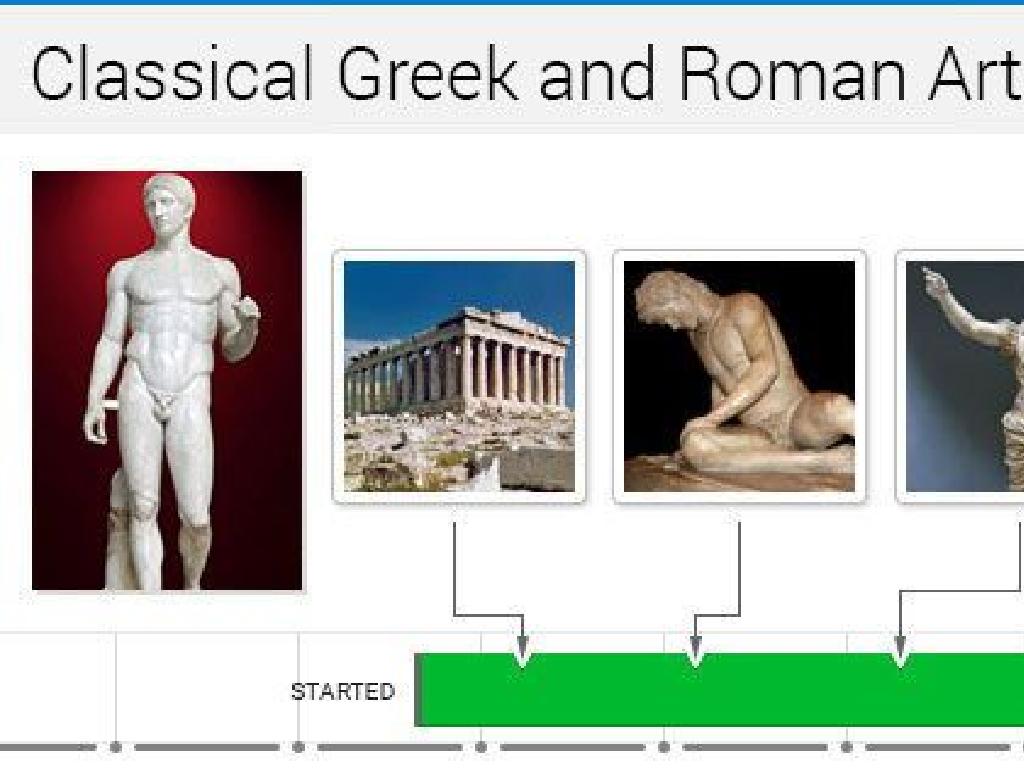Understand Gross And Net Income
Subject: Math
Grade: Fifth grade
Topic: Financial Literacy
Please LOG IN to download the presentation. Access is available to registered users only.
View More Content
Understanding Money: Gross and Net Income
– What is Financial Literacy?
– It’s the ability to manage and understand money.
– Importance of understanding money
– Helps us make smart money choices.
– Exploring Gross Income
– Gross income is your total earnings before deductions.
– Understanding Net Income
– Net income is what you get after taxes and deductions.
|
This slide introduces students to the concept of financial literacy, emphasizing its importance in making informed money management decisions. Financial literacy is the foundation for understanding how money works, including earning, saving, and spending. Students will learn the difference between gross income, which is the total amount earned, and net income, which is the amount left after taxes and other deductions. Understanding these concepts is crucial for future financial planning and responsibility. Engage the students with examples relevant to their experiences, such as allowance or money earned from chores, to illustrate gross and net income.
Understanding Income: Gross vs. Net
– What does income mean?
– Money that you receive for work or through investments.
– Various sources of income
– Jobs, businesses, investments, and gifts.
– Examples of earning income
– Babysitting, selling lemonade, or a weekly allowance.
– Gross vs. Net income
– Gross income is total earnings; net income is what you keep after deductions.
|
This slide introduces the concept of income to fifth-grade students, explaining that income is the money received for work or investments. Discuss various sources such as jobs, businesses, and gifts. Provide relatable examples like earning money from babysitting or a lemonade stand. Highlight the difference between gross income (total earnings before anything is taken out) and net income (the amount of money you take home after taxes and other deductions). Use simple, real-life scenarios to illustrate these concepts, ensuring students understand the basics of income which is a fundamental aspect of financial literacy.
Understanding Gross Income
– What is Gross Income?
– Total money earned before deductions
– Calculating Gross Income
– Add up all earnings before taxes
– Examples of Gross Income
– Salary, wages, overtime pay, bonuses
– Gross vs. Net Income
– Gross is total earnings, net is what you take home after deductions
|
Gross income is an important concept in financial literacy, representing the total earnings of an individual before any deductions such as taxes, insurance, and retirement contributions. When calculating gross income, students should learn to add up all forms of income, including salary, wages, overtime, and bonuses. Provide clear examples by calculating gross income for different professions, showing how it varies based on hours worked and rate of pay. Emphasize the difference between gross income and net income, ensuring students understand that net income is the amount they actually receive after all deductions. This foundational knowledge is crucial for their understanding of personal finance and budgeting.
Understanding Net Income
– What is Net Income?
– Net Income is what you earn after deductions
– Gross vs. Net Income
– Gross Income is total earnings; Net is what’s left after expenses
– Calculating Net Income
– Subtract taxes and other deductions from your Gross Income
– Real-world examples
– Imagine your weekly allowance is $10, but you save $2. Net Income is $8
|
Net Income is a crucial concept in financial literacy, representing the amount of money a person actually takes home after all deductions are made from their gross income. It’s important for students to understand the difference between gross income, which is the total amount earned before anything is taken out, and net income, which is the amount left after deductions such as taxes, social security, and health insurance. Provide examples of how to calculate net income by subtracting various deductions from gross income. Use relatable scenarios, such as an allowance, to illustrate how net income works in everyday life. Encourage students to think about their own or their family’s income sources and the types of deductions that might apply.
Understanding Deductions from Gross Income
– What are income deductions?
– Money taken from your gross income for taxes, health insurance, etc.
– Types of common deductions
– Examples: federal/state taxes, Social Security, Medicare, retirement contributions.
– Deductions’ impact on net income
– Deductions reduce gross income to give you your net income, the money you take home.
– Calculating net income
– Subtract total deductions from gross income to find net income.
|
This slide aims to explain the concept of deductions from gross income, which is a crucial part of understanding financial literacy. Begin by defining deductions as amounts subtracted from gross income, which include various taxes and personal contributions like health insurance. Discuss common types of deductions, such as federal and state taxes, Social Security, and Medicare. Explain how these deductions affect the net income, which is the actual amount of money an individual receives after all deductions are made. To help students grasp the concept, provide an example calculation showing how to subtract deductions from gross income to determine net income. Encourage students to think about why understanding gross and net income is important for financial planning.
Calculating Net Income
– Steps to find Net Income
– Net Income = Gross Income – Deductions
– Deduct expenses from Gross Income
– Deductions can be taxes, health insurance, etc.
– Practice problem on Net Income
– Example: $1000 Gross – $300 Deductions = $700 Net
|
This slide introduces students to the concept of net income and how it is calculated from gross income. Begin by explaining that gross income is the total amount earned before any deductions. Then, discuss common deductions such as taxes, health insurance, and retirement savings. Provide a step-by-step guide on how to calculate net income by subtracting these deductions from the gross income. Use the practice problem to apply this knowledge: If a person earns $1000 in gross income and has $300 in deductions, their net income would be $700. Encourage students to solve the problem and understand how different deductions can affect their net income. This exercise will help them grasp the basics of personal finance and the importance of budgeting.
Real-Life Math: Paychecks and Income
– Understanding paychecks
– Gross vs. Net Income
– Gross income is your total earnings; net income is what you actually receive after deductions.
– Activity: Calculate Net Income
– Given different gross incomes and deductions, figure out the net income.
– Discuss real-life implications
– Understanding how taxes and other deductions affect your take-home pay.
|
This slide introduces students to the concept of gross and net income through the context of a paycheck. Begin by explaining that gross income is the total amount you earn before anything is taken out for taxes and other deductions. Net income, on the other hand, is the amount of money you actually receive after all those deductions are made. For the activity, provide students with examples of gross incomes and a list of possible deductions such as federal tax, state tax, and healthcare. They will use basic subtraction to calculate the net income. This exercise will help them understand the difference between gross and net income and the importance of budgeting based on net income. Discuss how this knowledge is applicable in real life, such as when their parents receive a paycheck or when they start earning money themselves.
Class Activity: Paycheck Detectives
– Become paycheck detectives
– Analyze sample paychecks in groups
– Identify Gross and Net Income
– Gross Income: Total earnings before deductions. Net Income: Earnings after deductions.
– Share findings with the class
|
This activity is designed to give students a practical understanding of gross and net income through hands-on analysis. Provide each group with sample paychecks that clearly show gross income, deductions, and net income. Guide them to observe the differences and calculate both incomes. Encourage discussion within groups to ensure comprehension. After the activity, facilitate a class discussion where each group shares their findings, reinforcing the concepts of gross and net income. Possible activities: 1) Comparing paychecks with different gross incomes to see how deductions affect net income. 2) Role-playing an employer explaining a paycheck to an employee. 3) Creating a simple paycheck for a fictional job. 4) Calculating the percentage of gross income that goes to taxes and other deductions.
Understanding Your Paycheck: Recap & Questions
– Recap: Gross vs. Net Income
– Gross income is your total earnings; net income is what you take home after deductions.
– Why paycheck details matter
– Knowing how to read your paycheck helps you manage your money better.
– Ask your questions!
– Let’s answer and learn together
|
As we conclude today’s lesson on financial literacy, it’s important to recap the difference between gross and net income. Gross income is the total amount you earn before any deductions, while net income is the amount you receive after taxes and other deductions are taken out. Understanding your paycheck is crucial for effective money management and future financial planning. Now, let’s open the floor for any questions you might have. This is your opportunity to clarify any doubts and reinforce your understanding of gross and net income. Teachers should be prepared to answer common questions and provide examples to ensure students grasp the concepts.






